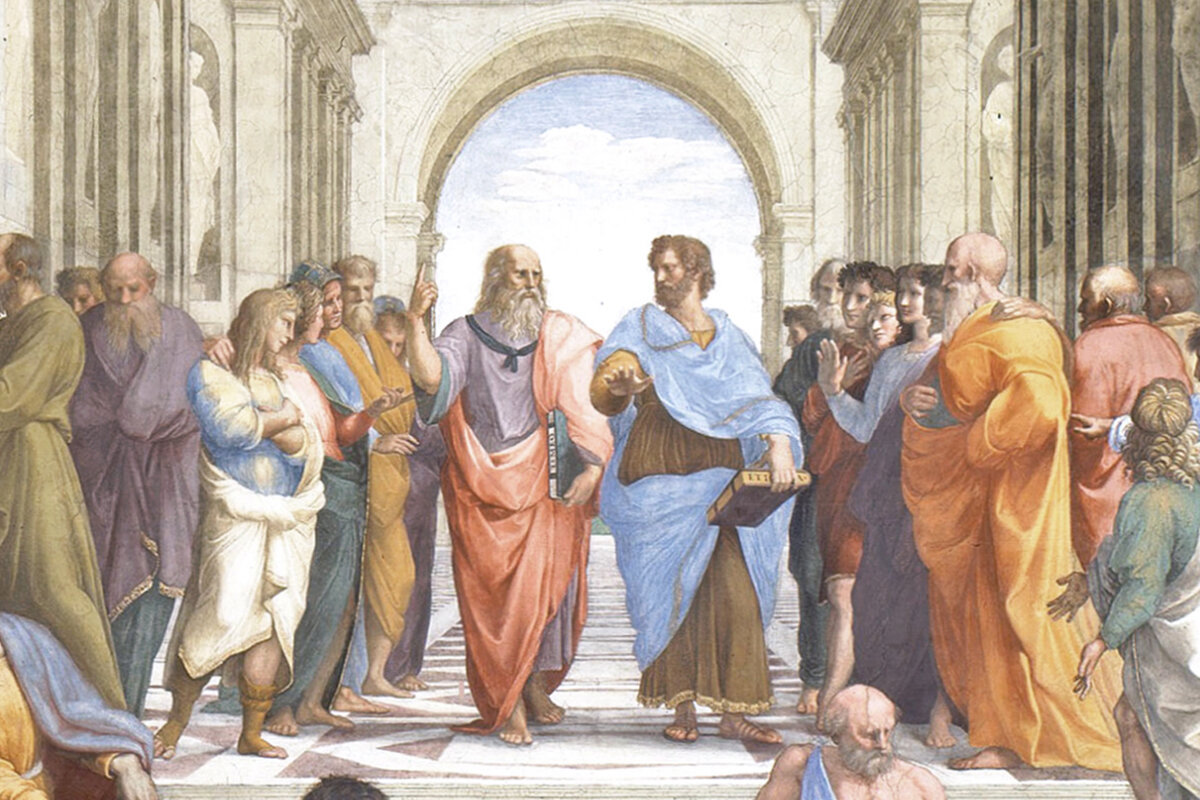Raphael’s School of Athens and The Duality of Verticality
Detail of Raphael’s 1511 School of Athens fresco at the Stanze di Raffaello in the Vatican. At the center of the work, Plato and Aristotle are discussing their theories of philosophy, which are closely tied to verticality. Plato gestures up toward the sky, while Aristotle gestures forward to the world of the surface.
One of Raphael’s most famous works is his School of Athens fresco at the Stanze di Raffaello in the Vatican. The painting, completed in 1511, shows key historical figures of philosophy, with Plato and Aristotle located at the center (pictured above). The two central figures are in dialogue about their respective beliefs, with Plato pointing up toward the sky and Aristotle holding his hand down, gesturing toward the space around them. This duality of gestures runs core to the field of philosophy, and it also runs core to the Theory of Verticality.
Verticality is based on the duality of here (the surface) and up there (the sky). For all of human history, we’ve sought to escape the surface and achieve the sky. The resulting tension between these two worlds, and the fact that humanity is confined to one of them, is the same tension that exists between the two aforementioned figures’ philosophies.
Plato believed in Idealism. For him, the world we experience is second to a higher, unchanging world that includes universal truths such as beauty, justice and wisdom. These ideas are true and unchanging, regardless of humanity’s beliefs or awareness of them. They exist outside the world we perceive with our senses, which is imperfect and changing. The objects we perceive in our world all contain elements of their ideals, but never achieve the ideal itself. In a sense, Plato is describing a form of Heaven, and he points upward to signify this.
Aristotle was Plato’s student, and he believed in Realism. For him, the world we experience with our senses is the only world we can be sure of. He believed in the study of the human experience, including subjects such as relationships, government and justice. He gestures forward to the space around him, which represents the surface. In Aristotle’s world-view, there is no ideal form, because form exists within this world, rather than separate from it.
Raphael’s 1511 School of Athens fresco at the Stanze di Raffaello in the Vatican, depicting key figures in the field of philosophy. In the center are Plato and Aristotle, and they’re debating the duality of their theories, which relate closely to verticality.
The duality between Plato and Aristotle’s philosophies is the duality of verticality. Humanity is confined to the surface world, and we’re stuck here with all the stuff we perceive here. These objects are accessible to us, and we interact with them. We seek to escape this surface world, however, and to achieve verticality. We see the world above our heads as a separate, idealized version of our world, and we want to get up there to experience it. We want to be the ideal version of ourselves, and the idealized version of ourselves exists somewhere up there. For us humans, the idea of flight and escape from our surface prison represents true freedom, which is an ideal state to achieve.
Throughout history we’ve attached meaning to this idealized world, and we’ve invented countless ideas and stories about what goes on up there. The most common of these is a Utopian paradise, commonly called Heaven. Plato and Aristotle are debating the relationship between these two worlds, which is central to the philosophy of verticality.
Check out more examples of verticality in the arts.


